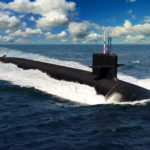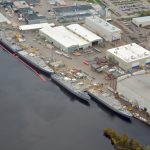
The U.S. Navy, in cooperation with British and Canadian partners, started its biennial ICEX (Ice Exercise) 2018 in the Arctic Ocean this week.ICEX is a five-week exercise that involves the Navy testing its operational readiness in the Arctic while training in the region and working with allies and partners. It notably features several submarine transits.The exercise began when the Navy built temporary Ice Camp Skate and three submarines arrived: the Seawolf-class USS Connecticut (SSN-22) Los Angeles-class USS Hartford (SSN-768), and…

 By
By 











